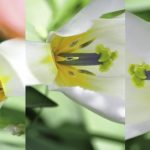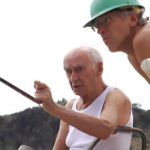IAP Interview: Marija Sajkas, Journalist and Media Expert
“It is important to remember that journalists need artists as well. It is the duty of media to report on art and their readership expects them to do so as well.”
We all know media exposure matters in building up an artist’s career. The more visible and accessible the work, the more likely it will be discovered by other galleries, publishers, theaters, critics, and art enthusiasts. Media coverage can also raise a work’s market value — a boost, it seems, all artists want.
Journalist and media expert, Marija Sajkas, generously shared with us her insights about garnering media attention in the contemporary art world as well as tips and tricks to attain more coverage. Read them in the IAP interview below:
NYFA: Can you share a little bit about your media and journalism background? How did you get involved in supporting the immigrant community?
MARIJA SAJKAS: I am originally from former Yugoslavia. I moved to New York City in my early 30s. When I first arrived, I was looking for a place that could serve both as a community as well as a resource to help me understand where I am and where my place is in the big city. This led me to work in a community-based organization that assists immigrants from the Balkans and promotes Balkan culture through exhibitions and dances. From there, I moved on to the New York Immigration Coalition (NYIC) helping CBOs that worked on health access with communications and talking to press and legislators. My most recent consultancy work was for the Mayor’s Office of Immigrant Affairs (MOIA) where I oversaw a communications campaign.
At the same time I was contributing to these organizations, I continued my work as a journalist and media analyst covering stories about the United States and South Eastern Europe.
NYFA: How important, would you say, is media exposure for the development of an artist’s career?
MS: Most of us live immersed in a multitude of media. From listening to news channels 24/7 to documenting our every step on Instagram, Facebook, or on specialized blogs, we rely on media to make both small and big decisions and to share our lives, projects, and ideas with others. We are also moved to action by the media. With this role the media now takes in our lives, it is really important for artists to embrace, before anything else, social media. In doing so, artists may find not only an audience but a community of like-minded people who could be beneficial to their work. Also, many art lovers are actively seeking the next big thing. By having their art accessible and even advertised on social media, artists are increasing their chances to be recognized, explored, and part of a larger dialogue in the art world.
NYFA: The media, it seems, is quite intimidating for many artists to approach. Are there any insights you can share that might ease any fears in doing so?
MS: The media, however large they may seem, are people on the other side who have the responsibility to report on the going-ons in society. Therefore, it is important to remember that journalists need artists as well. It is the duty of media to report on art and their readership expects them to do so as well.
If an artist identifies more as an introvert or is a bit more hesitant, the easiest way to utilize the media would probably be for him or her to partner with someone who has skills and expertise in online media. In that scenario, the partner could take on the media work while the artist provides a different kind of expertise in reciprocation. I am thinking about partnerships in which, for instance, a shy visual artist could collaborate with a blogger who might need artwork for their website. Or, as another example, a software engineer, in exchange for some writing, could assist a writer to build up and maintain their WordPress or website. In my experience, Instagram is a particularly good place for promoting artistic work while still maintaining some degree of anonymity.
Once the artist has established an online presence, he or she could begin assembling names, e-mails, Twitter handles, and phone numbers of journalists who customarily cover their type of work. The artist can engage them through social media, direct their interest to the web page and invite them to a particular event. Many journalists have Twitter accounts and this is a good way to contact them. Journalists are generally curious people and I would argue that most of them would respond back to queries, as long as they are interesting and asked in a polite way.
NYFA: Does the media act differently in America than in other parts of the world? If so, is there anything we can learn from this?
MS: I may be wrong, but my sense is that it is harder to engage with the media in New York City than in other places in the world. In many aspects, New York is the epicenter of the artistic world, and on any given day of the week there is so much going on that a journalist can pick and choose what to write about. I know this level of competition that can exist first-hand as a working journalist. A press release and a phone call may work well for a few places that are not as busy. But in general, it would be helpful if the artist, in addition to having the traditional work done, also has relationships within the media industry. On the other hand, I know for sure that sometimes art events can get picked up and featured in big news outlets solely because they seem interesting.
NYFA: What do you think are the best ways to approach or get noticed by the media for specific events an artist may be planning, such as a poetry reading, performance or exhibition?
MS: I would start locally and slowly widen the net. Find journalists, bloggers and other social media trendsetters that may have a connection to your story. If you belong to a particular immigrant community, make sure to find corresponding ethnic outlets. Also, look for media outlets that cover events in your neighborhood. Every borough has its own print media, and I really like web-based outlets such as DNA Info (look for your neighborhood!) and area-specific publications such as Long Island Press. If you get noticed by a local or an immigrant press, this maybe lead to bigger, mainstream publications. Journalists from big media still read articles of other journalists and are often looking for stories in local media.
Also, most of the traditional media and many new media have event calendars. Submit information about your events to all of them.
Finally, never be ashamed to ask for help. Cultural institutions almost always have their own media contacts. Moreover, if you are exhibiting your work in a place such as a yoga studio, a church, or a coffee shop, you can always ask the owners to help with spreading the word- they can invite their patrons and post information on their website. If you know the details of your event well in advance, you could also reach out to offices of elected officials in your neighborhood and ask them for media support.
NYFA: Do you have any tips for writing a strong press release? If an artist is multi-lingual, should they translate it? Would that be an appropriate strategy to reach other publications or communities?
MS: Yes! First of all, please be mindful that journalists get a lot of materials on a daily basis. This is why your press release should stand out by its clarity both visually and content wise. Please type in a font that is easy to read and don’t exceed one page. Spell out clearly who, what, and where, and think about one or two strong sentences that could encapsulate the why. Although I contribute for ethnic media, I don’t see a need for a bilingual press release. For the extra coverage, you could target NYC based foreign correspondents who report for outlets in your home countries. In that case, a well-crafted press release in the other language is a must.
Marija Šajkaš is currently the U.S. correspondent for Novi Magazin (New Magazine) and founder of the agency for media support, research, and analysis 4 Better Media. During and after the wars in the former Yugoslavia, she worked for the UN Peace Keeping Forces and International Committee of the Red Cross (ICRC). After coming to the US in 2000, Šajkaš worked as a Balkan media consultant and researcher for the Center for War, Peace, and the News Media at New York University (NYU), and as a program coordinator for a New York-based Reconciliation and Culture Cooperation Network. She also worked for the New York Immigration Coalition (NYIC) where she coordinated work of CBOs, and as a head of development and operations for Media Diversity Institute – USA. Marija Šajkaš holds a BA in Serbian Language & Literature from the University of Philology in Belgrade, Serbia, and an MS in International Affairs from New School University with a concentration in Culture and Media Studies. She has recently published a novel about immigration in her native Serbia.
This interview originally appeared in the ConEdison Immigrant Artist Program Newsletter #86. Subscribe to this free monthly e-mail for artist’s features, opportunities and events here.
– Interview conducted by Priscilla Son, IAP Intern
Image: Courtesy of Marija Sajkas, Book Signing Event, Serbia, 2014






